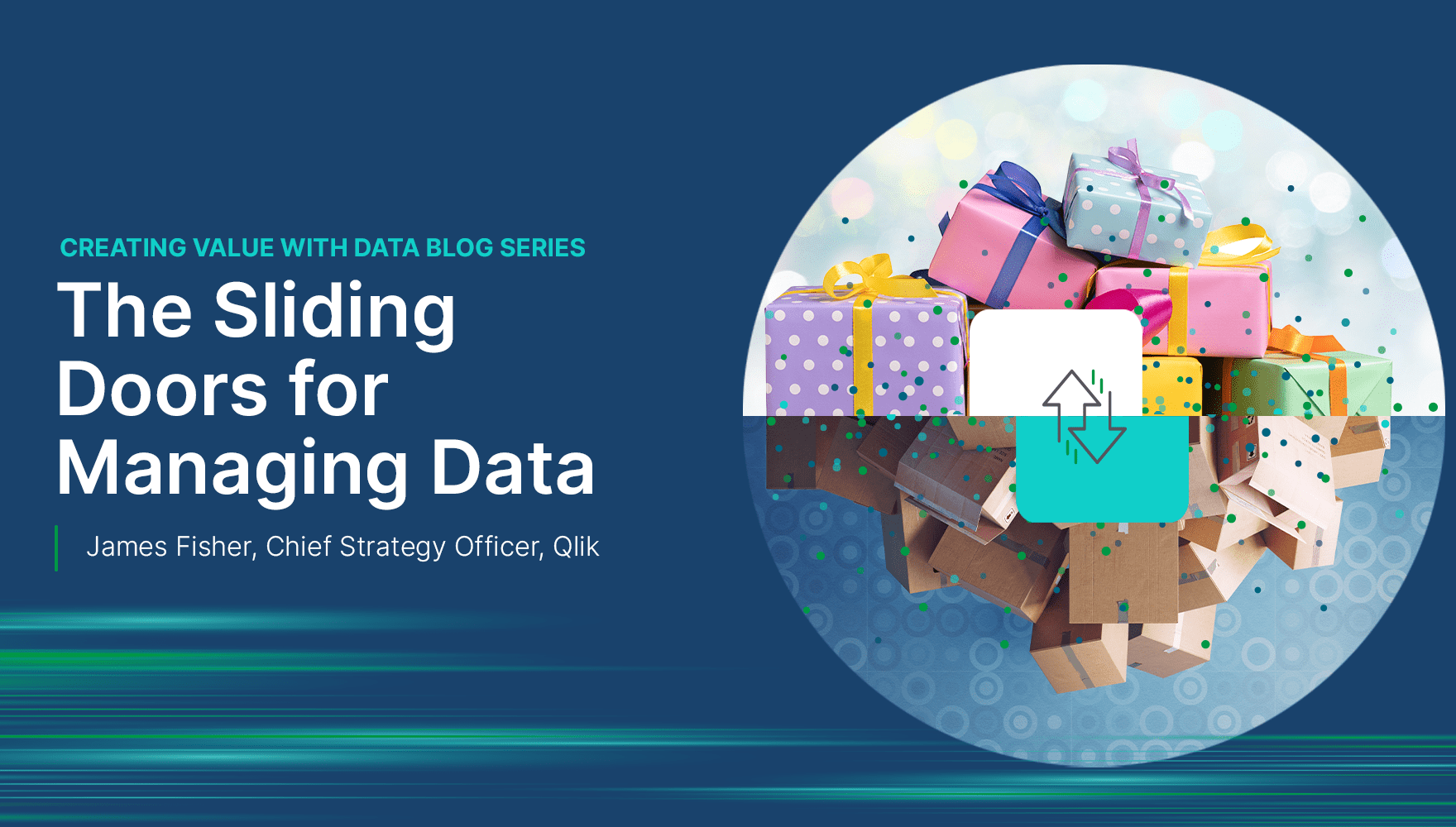In this blog series, I am exploring the “sliding doors”, or divergent paths, for creating value with data across different use cases, practices, and strategies. In this post, I want to discuss how to generate value with Data Products.
As I reviewed in my last blog, grabbing the door to the better path for managing your data isn’t just about solving your particular use case: it’s ultimately about delivering value for your business. In a recent analysis, Gartner found a 30% difference in net income for organizations with higher data and analytics maturity.
The upside of successfully managing data for your business is tangible and significant… but how do you get there?
Wrong Door
One of data’s biggest challenges is that today, too many organizations continue to treat it as merely a project, a means to an end. We’ve heard time and time again that “data is the new oil”, but if you asked most organizations today who owns their data, nobody would raise their hand. Instead, data lives in fragments and silos across the organization. On one end, you have Data Producers, who are largely centralized IT and focused on data platforms and technology, not on how people would use the data, consume it, what shape it should be in, what domains are important, what their use cases are. These Data Producers are supported by data teams organized around process functions: Data Ingestion, Data Transformation, Data Analysis, Data Science, and Data Governance. On the other end, you have Data Consumers who are often unable to clearly convey their requirements. They are focused on their business domain, and they don’t trust the data that is delivered to them, so they end up acquiring it and manipulating it themselves in order to justify a predetermined point of view.
This approach creates a problematic gap: IT ends up spending millions of dollars building data platforms that are not adopted and end up creating data sharing barriers between the producers and consumers, since the outcome is not reliable, or more specifically shaped to meet the domain-specific business requirements of the consumer. All this leads to higher costs and longer time to outcomes, and frankly, not a data driven organization.
Right Door
How do you solve this? I have a been long-time advocate for treating data as a product: applying the principles of product management to your data. It’s a point of view that’s likely been influenced by my many years in product leadership roles, but also informed from great feedback sessions with Qlik’s Executive Advisory Board, a group of customers we periodically gather – most recently just last week.
A product-centric approach for data management delivers high-quality, curated, and trusted AI-ready data assets that are easily accessible by your data consumers and centered on their domain. By organizing various data elements – raw data, transformations, data quality rules, contracts, access patterns, and infrastructure – into a single trusted cohesive unit, raw data can be refined and shaped to precisely align with the unique requirements and objectives of the business.
Think of it this way: just like your iPhone, a data product was built for a purpose, it is consumption-ready, it is marketed and serviced, it has an owner, it has a version number, etc. And before it got into your hands, it was designed, tested and managed by a product team. Indeed, with a Data Product approach, data product teams are typically established, aligned to domains, and headed by Data Product Managers. This new and emerging role acts as “CEO” of this team, helping bring ownership, accountability, and trust to data.
It's also important to note that data products are not just for internal use: some can be external, sometimes even monetized – an evolution we covered most recently in our 2024 Trends report. Whether the consumer is internal or external, the most effective data product teams understand that these consumers should be treated as customers.
The great news is that this approach doesn’t just help solve organizational gaps: it creates real value for your business. McKinsey estimates that “companies that treat data like a product can reduce the time it takes to implement it in new use cases by as much as 90%, decrease their total ownership (technology, development, and maintenance) costs by up to 30%, and reduce their risk and data governance burden.”
One company that has benefited from value generated by Data Products is Vista, the design and marketing partner to millions of small businesses around the world. 2+ years into the journey, Vista had 35 data product managers and 150 people build data products across data domains like marketing or pricing. Examples of data products at Vista include a media mix model to measure impact of changes in media spend, a pricing model powered by ML to help set pricing, as well as a product recommendation model which serves up personalized product recommendations to customers on their website. By adopting data products, Vista has been able to generate an incremental $90 million in profits with a large share of it recurring on an annual basis.
Door to Generative AI
There’s another reason why I think it’s important for you to consider this approach: the value potential for your generative AI projects.
To truly harness the power of generative AI, organizations need to ground their large language models (LLMs) with corporate data. That’s where data products will play a critical role, becoming the vehicle to provide relevant, contextual, curated, and timely data for training AI models and/or for Retrieval Augmented Generation (RAG) applications. As such, generative AI is set to be the new consumer for data products, and so I expect that it will be the catalyst for a rise in demand for data products.
Looking more to the future, I think we will see a data economy evolving. So far, generative AI has downloaded the entire internet without paying for it. That will change. In a data economy, you need data products, which will ultimately see the emergence of data capital as a new asset class. Stay tuned…
Getting Started
So, if you haven’t considered Data Products for your organization yet, I encourage you to start planning. While this will likely be a multi-year journey, there are ways to walk before you run. My advice is to start with one data product: for example, one data set that you can assign to an owner, and apply data quality to, then expose for consumption. You can then put that data product through a feedback loop, assessing how it is being used, and iterate on it, for instance by adding more data to it.
At Qlik, our approach is to support you on this journey as you build your data foundation for self-service capabilities, enable your data product teams to build and manage data products, and provide your data consumers the ability to search, find and consume your data products.
To learn more, please join us at Qlik Connect on June 3-5 in Orlando. We will cover this important topic alongside some of our customers who have been on the journey, sharing best practices and innovative solutions to help you get going.
In this article:
Executive Insights and Trends











































